
- •About the Author
- •About the Technical Editor
- •Credits
- •Is This Book for You?
- •Software Versions
- •Conventions This Book Uses
- •What the Icons Mean
- •How This Book Is Organized
- •How to Use This Book
- •What’s on the Companion CD
- •What Is Excel Good For?
- •What’s New in Excel 2010?
- •Moving around a Worksheet
- •Introducing the Ribbon
- •Using Shortcut Menus
- •Customizing Your Quick Access Toolbar
- •Working with Dialog Boxes
- •Using the Task Pane
- •Creating Your First Excel Worksheet
- •Entering Text and Values into Your Worksheets
- •Entering Dates and Times into Your Worksheets
- •Modifying Cell Contents
- •Applying Number Formatting
- •Controlling the Worksheet View
- •Working with Rows and Columns
- •Understanding Cells and Ranges
- •Copying or Moving Ranges
- •Using Names to Work with Ranges
- •Adding Comments to Cells
- •What Is a Table?
- •Creating a Table
- •Changing the Look of a Table
- •Working with Tables
- •Getting to Know the Formatting Tools
- •Changing Text Alignment
- •Using Colors and Shading
- •Adding Borders and Lines
- •Adding a Background Image to a Worksheet
- •Using Named Styles for Easier Formatting
- •Understanding Document Themes
- •Creating a New Workbook
- •Opening an Existing Workbook
- •Saving a Workbook
- •Using AutoRecover
- •Specifying a Password
- •Organizing Your Files
- •Other Workbook Info Options
- •Closing Workbooks
- •Safeguarding Your Work
- •Excel File Compatibility
- •Exploring Excel Templates
- •Understanding Custom Excel Templates
- •Printing with One Click
- •Changing Your Page View
- •Adjusting Common Page Setup Settings
- •Adding a Header or Footer to Your Reports
- •Copying Page Setup Settings across Sheets
- •Preventing Certain Cells from Being Printed
- •Preventing Objects from Being Printed
- •Creating Custom Views of Your Worksheet
- •Understanding Formula Basics
- •Entering Formulas into Your Worksheets
- •Editing Formulas
- •Using Cell References in Formulas
- •Using Formulas in Tables
- •Correcting Common Formula Errors
- •Using Advanced Naming Techniques
- •Tips for Working with Formulas
- •A Few Words about Text
- •Text Functions
- •Advanced Text Formulas
- •Date-Related Worksheet Functions
- •Time-Related Functions
- •Basic Counting Formulas
- •Advanced Counting Formulas
- •Summing Formulas
- •Conditional Sums Using a Single Criterion
- •Conditional Sums Using Multiple Criteria
- •Introducing Lookup Formulas
- •Functions Relevant to Lookups
- •Basic Lookup Formulas
- •Specialized Lookup Formulas
- •The Time Value of Money
- •Loan Calculations
- •Investment Calculations
- •Depreciation Calculations
- •Understanding Array Formulas
- •Understanding the Dimensions of an Array
- •Naming Array Constants
- •Working with Array Formulas
- •Using Multicell Array Formulas
- •Using Single-Cell Array Formulas
- •Working with Multicell Array Formulas
- •What Is a Chart?
- •Understanding How Excel Handles Charts
- •Creating a Chart
- •Working with Charts
- •Understanding Chart Types
- •Learning More
- •Selecting Chart Elements
- •User Interface Choices for Modifying Chart Elements
- •Modifying the Chart Area
- •Modifying the Plot Area
- •Working with Chart Titles
- •Working with a Legend
- •Working with Gridlines
- •Modifying the Axes
- •Working with Data Series
- •Creating Chart Templates
- •Learning Some Chart-Making Tricks
- •About Conditional Formatting
- •Specifying Conditional Formatting
- •Conditional Formats That Use Graphics
- •Creating Formula-Based Rules
- •Working with Conditional Formats
- •Sparkline Types
- •Creating Sparklines
- •Customizing Sparklines
- •Specifying a Date Axis
- •Auto-Updating Sparklines
- •Displaying a Sparkline for a Dynamic Range
- •Using Shapes
- •Using SmartArt
- •Using WordArt
- •Working with Other Graphic Types
- •Using the Equation Editor
- •Customizing the Ribbon
- •About Number Formatting
- •Creating a Custom Number Format
- •Custom Number Format Examples
- •About Data Validation
- •Specifying Validation Criteria
- •Types of Validation Criteria You Can Apply
- •Creating a Drop-Down List
- •Using Formulas for Data Validation Rules
- •Understanding Cell References
- •Data Validation Formula Examples
- •Introducing Worksheet Outlines
- •Creating an Outline
- •Working with Outlines
- •Linking Workbooks
- •Creating External Reference Formulas
- •Working with External Reference Formulas
- •Consolidating Worksheets
- •Understanding the Different Web Formats
- •Opening an HTML File
- •Working with Hyperlinks
- •Using Web Queries
- •Other Internet-Related Features
- •Copying and Pasting
- •Copying from Excel to Word
- •Embedding Objects in a Worksheet
- •Using Excel on a Network
- •Understanding File Reservations
- •Sharing Workbooks
- •Tracking Workbook Changes
- •Types of Protection
- •Protecting a Worksheet
- •Protecting a Workbook
- •VB Project Protection
- •Related Topics
- •Using Excel Auditing Tools
- •Searching and Replacing
- •Spell Checking Your Worksheets
- •Using AutoCorrect
- •Understanding External Database Files
- •Importing Access Tables
- •Retrieving Data with Query: An Example
- •Working with Data Returned by Query
- •Using Query without the Wizard
- •Learning More about Query
- •About Pivot Tables
- •Creating a Pivot Table
- •More Pivot Table Examples
- •Learning More
- •Working with Non-Numeric Data
- •Grouping Pivot Table Items
- •Creating a Frequency Distribution
- •Filtering Pivot Tables with Slicers
- •Referencing Cells within a Pivot Table
- •Creating Pivot Charts
- •Another Pivot Table Example
- •Producing a Report with a Pivot Table
- •A What-If Example
- •Types of What-If Analyses
- •Manual What-If Analysis
- •Creating Data Tables
- •Using Scenario Manager
- •What-If Analysis, in Reverse
- •Single-Cell Goal Seeking
- •Introducing Solver
- •Solver Examples
- •Installing the Analysis ToolPak Add-in
- •Using the Analysis Tools
- •Introducing the Analysis ToolPak Tools
- •Introducing VBA Macros
- •Displaying the Developer Tab
- •About Macro Security
- •Saving Workbooks That Contain Macros
- •Two Types of VBA Macros
- •Creating VBA Macros
- •Learning More
- •Overview of VBA Functions
- •An Introductory Example
- •About Function Procedures
- •Executing Function Procedures
- •Function Procedure Arguments
- •Debugging Custom Functions
- •Inserting Custom Functions
- •Learning More
- •Why Create UserForms?
- •UserForm Alternatives
- •Creating UserForms: An Overview
- •A UserForm Example
- •Another UserForm Example
- •More on Creating UserForms
- •Learning More
- •Why Use Controls on a Worksheet?
- •Using Controls
- •Reviewing the Available ActiveX Controls
- •Understanding Events
- •Entering Event-Handler VBA Code
- •Using Workbook-Level Events
- •Working with Worksheet Events
- •Using Non-Object Events
- •Working with Ranges
- •Working with Workbooks
- •Working with Charts
- •VBA Speed Tips
- •What Is an Add-In?
- •Working with Add-Ins
- •Why Create Add-Ins?
- •Creating Add-Ins
- •An Add-In Example
- •System Requirements
- •Using the CD
- •What’s on the CD
- •Troubleshooting
- •The Excel Help System
- •Microsoft Technical Support
- •Internet Newsgroups
- •Internet Web sites
- •End-User License Agreement

Part IV: Using Advanced Excel Features
Where Did Those Number Formats Come From?
Excel may create custom number formats without you realizing it. When you use the Increase Decimal or Decrease Decimal button on the Home Number group of the Ribbon (or on the Mini toolbar), Excel creates new custom number formats, which appear on the Number tab in the Format Cells dialog box. For example, if you click the Increase Decimal button five times, the following custom number formats are created:
0.0
0.000
0.0000
0.000000
A format string for two decimal places is not created because that format string is built-in.
Custom Number Format Examples
The remainder of this chapter consists of useful examples of custom number formats. You can use most of these format codes as-is. Others may require slight modification to meet your needs.
Scaling values
You can use a custom number format to scale a number. For example, if you work with very large numbers, you may want to display the numbers in thousands (that is, display 1,200,000 as 1,200). The actual number, of course, will be used in calculations that involve that cell. The formatting affects only how it is displayed.
Displaying values in thousands
The following format string displays values without the last three digits to the left of the decimal place and no decimal places. In other words, the value appears as if it’s divided by 1,000 and rounded to no decimal places.
#,###,
A variation of this format string follows. A value with this number format appears as if it’s divided by 1,000 and rounded to two decimal places.
#,###.00,
Table 24.5 shows examples of these number formats:
560
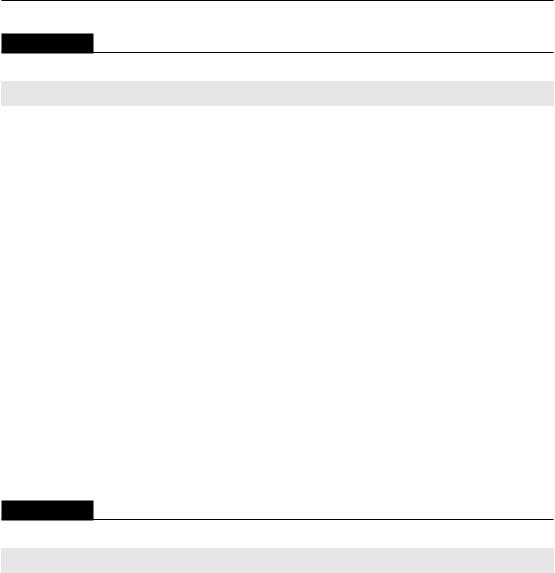
Chapter 24: Using Custom Number Formats
TABLE 24.5
Examples of Displaying Values in Thousands
Value |
Number Format |
Display |
|
|
|
123456 |
#,###, |
123 |
|
|
|
1234565 |
#,###, |
1,235 |
|
|
|
–323434 |
#,###, |
–323 |
|
|
|
123123.123 |
#,###, |
123 |
|
|
|
499 |
#,###, |
(blank) |
|
|
|
500 |
#,###, |
1 |
|
|
|
123456 |
#,###.00, |
123.46 |
|
|
|
1234565 |
#,###.00, |
1,234.57 |
|
|
|
–323434 |
#,###.00, |
–323.43 |
|
|
|
123123.123 |
#,###.00, |
123.12 |
|
|
|
499 |
#,###.00, |
.50 |
|
|
|
500 |
#,###.00, |
.50 |
|
|
|
Displaying values in hundreds
The following format string displays values in hundreds, with two decimal places. A value with this number format appears as if it’s divided by 100 and rounded to two decimal places.
0”.”00
Table 24.6 shows examples of these number formats:
TABLE 24.6
Examples of Displaying Values in Hundreds
Value |
Number Format |
Display |
|
|
|
546 |
0”.”00 |
5.46 |
|
|
|
100 |
0”.”00 |
1.00 |
|
|
|
9890 |
0”.”00 |
98.90 |
|
|
|
500 |
0”.”00 |
5.00 |
|
|
|
–500 |
0”.”00 |
–5.00 |
|
|
|
0 |
0”.”00 |
0.00 |
|
|
|
561
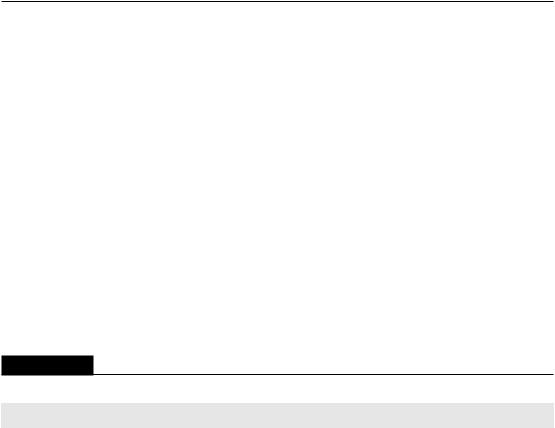
Part IV: Using Advanced Excel Features
Displaying values in millions
The following format string displays values in millions with no decimal places. A value with this number appears as if it’s divided by 1,000,000 and rounded to no decimal places.
#,###,,
A variation of this format string follows. A value with this number appears as if it’s divided by 1,000,000 and rounded to two decimal places.
#,###.00,,
Another variation follows. This adds the letter M to the end of the value.
#,###,,M
The following format string is a bit more complex. It adds the letter M to the end of the value — and also displays negative values in parentheses as well as displaying zeros.
#,###.0,,”M”_);(#,###.0,,”M)”;0.0”M”_)
Table 24.7 shows examples of these format strings.
TABLE 24.7
Examples of Displaying Values in Millions
Value |
Number Format |
Display |
|
|
|
123456789 |
#,###,, |
123 |
|
|
|
1.23457E+11 |
#,###,, |
123,457 |
|
|
|
1000000 |
#,###,, |
1 |
|
|
|
5000000 |
#,###,, |
5 |
|
|
|
–5000000 |
#,###,, |
–5 |
|
|
|
0 |
#,###,, |
(blank) |
|
|
|
123456789 |
#,###.00,, |
123.46 |
|
|
|
1.23457E+11 |
#,###.00,, |
123,457.00 |
|
|
|
1000000 |
#,###.00,, |
1.00 |
|
|
|
5000000 |
#,###.00,, |
5.00 |
|
|
|
–5000000 |
#,###.00,, |
–5.00 |
|
|
|
0 |
#,###.00,, |
.00 |
|
|
|
123456789 |
#,###,,”M” |
123M |
|
|
|
1.23457E+11 |
#,###,,”M” |
123,457M |
|
|
|
1000000 |
#,###,,”M” |
1M |
|
|
|
562
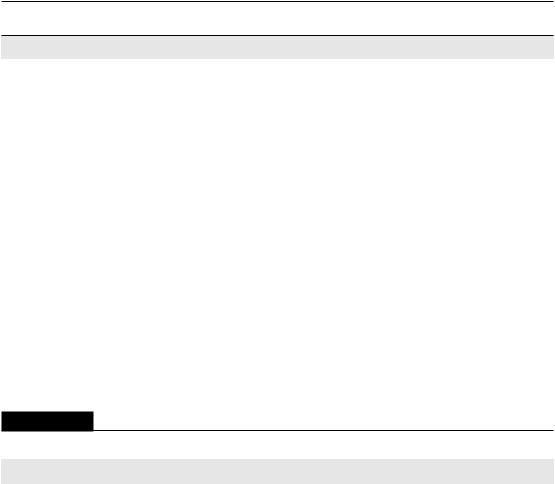
Chapter 24: Using Custom Number Formats
Value |
Number Format |
Display |
|
|
|
5000000 |
#,###,,”M” |
5M |
|
|
|
–5000000 |
#,###,,”M” |
–5M |
|
|
|
0 |
#,###,,”M” |
M |
|
|
|
123456789 |
#,###.0,,”M”_);(#,###.0,,”M)”;0.0”M”_) |
123.5M |
|
|
|
1.23457E+11 |
#,###.0,,”M”_);(#,###.0,,”M)”;0.0”M”_) |
123,456.8M |
|
|
|
1000000 |
#,###.0,,”M”_);(#,###.0,,”M)”;0.0”M”_) |
1.0M |
|
|
|
5000000 |
#,###.0,,”M”_);(#,###.0,,”M)”;0.0”M”_) |
5.0M |
|
|
|
–5000000 |
#,###.0,,”M”_);(#,###.0,,”M)”;0.0”M”_) |
(5.0M) |
|
|
|
0 |
#,###.0,,”M”_);(#,###.0,,”M)”;0.0”M”_) |
0.0M |
|
|
|
Adding zeros to a value
The following format string displays a value with three additional zeros and no decimal places. A value with this number format appears as if it’s rounded to no decimal places and then multiplied by 1,000.
#”,000”
Examples of this format string, plus a variation that adds six zeros, are shown in Table 24.8.
TABLE 24.8
Examples of Displaying a Value with Extra Zeros
Value |
Number Format |
Display |
|
|
|
1 |
#”,000” |
1,000 |
|
|
|
1.5 |
#”,000” |
2,000 |
|
|
|
43 |
#”,000” |
43,000 |
|
|
|
–54 |
#”,000” |
–54,000 |
|
|
|
5.5 |
#”,000” |
6,000 |
|
|
|
0.5 |
#”,000,000” |
1,000,000 |
|
|
|
0 |
#”,000,000” |
,000,000 |
|
|
|
1 |
#”,000,000” |
1,000,000 |
|
|
|
1.5 |
#”,000,000” |
2,000,000 |
|
|
|
43 |
#”,000,000” |
43,000,000 |
|
|
|
–54 |
#”,000,000” |
–54,000,000 |
|
|
|
5.5 |
#”,000,000” |
6,000,000 |
|
|
|
0.5 |
#”,000,000” |
1,000,000 |
|
|
|
563
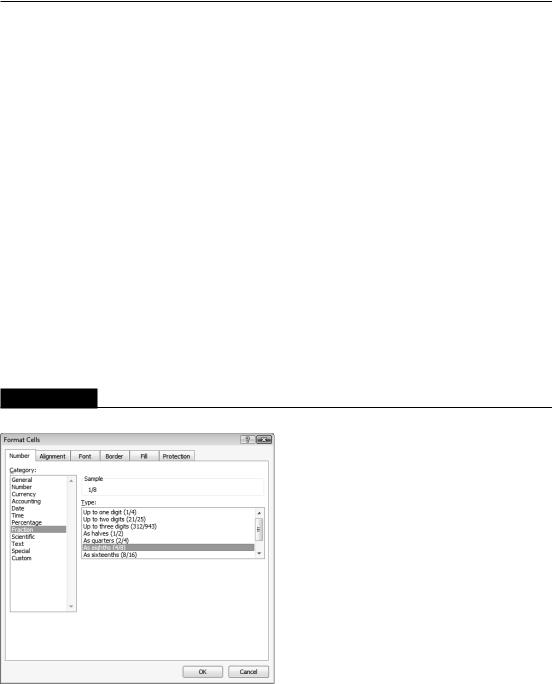
Part IV: Using Advanced Excel Features
Displaying leading zeros
To display leading zeros, create a custom number format that uses the 0 character. For example, if you want all numbers to display with ten digits, use the number format string that follows. Values with fewer than ten digits will display with leading zeros.
0000000000
You also can force all numbers to display with a fixed number of leading zeros. The format string that follows, for example, appends three zeros to the beginning of each number:
“000”#
In the following example, the format string uses the repeat character code (an asterisk) to apply enough leading zeros to fill the entire width of the cell:
*00
Displaying fractions
Excel supports quite a few built-in fraction number formats (select the Fraction category on the Number tab in the Format Cells dialog box). For example, to display the value .125 as a fraction with 8 as the denominator, select As Eighths (4/8) from the Type list (see Figure 24.3).
FIGURE 24.3
Selecting a number format to display a value as a fraction.
564
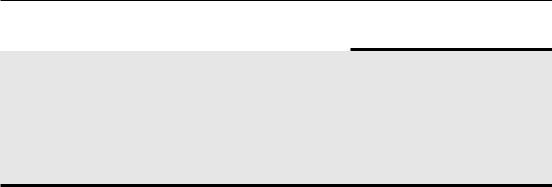
Chapter 24: Using Custom Number Formats
Testing Custom Number Formats
When you create a custom number format, don’t overlook the Sample box on the Number tab in the Format Cells dialog box. This box displays the value in the active cell using the format string in the Type box.
It’s a good idea to test your custom number formats by using the following data: a positive value, a negative value, a zero value, and text. Often, creating a custom number format takes several attempts. Each time you edit a format string, it is added to the list. When you finally get the correct format string, access the Format Cells dialog box one more time and delete your previous attempts.
You can use a custom format string to create other fractional formats. For example, the following format string displays a value in 50ths:
# ??/50
To display the fraction reduced to its lowest terms, use a question mark after the slash symbol. For example, the value 0.125 can be expressed as 2/16, and 2/16 can be reduced to 1/8. Here’s an example of a number format that displays the value as a fraction reduced to its simplest terms:
# ?/?
If you omit the leading hash symbol, the value is displayed without a leading value. For example, the value 2.5 would display as 5/2 using this number format code:
?/?
The following format string displays a value in terms of fractional dollars. For example, the value 154.87 is displayed as 154 and 87/100 Dollars.
0 “and “??/100 “Dollars”
The following example displays the value in sixteenths, with a quotation mark appended to the right. This format string is useful when you deal with fractions of inches (for example, 2/16").
# ??/16\”
Displaying a negative sign on the right
The following format string displays negative values with the negative sign to the right of the number. Positive values have an additional space on the right, so both positive and negative numbers align properly on the right.
0.00_-;0.00-
565
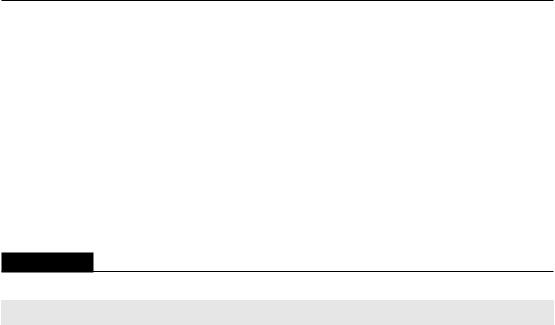
Part IV: Using Advanced Excel Features
To make the negative numbers more prominent, you can add a color code to the negative part of the number format string:
0.00_-;[Red]0.00-
Formatting dates and times
When you enter a date into a cell, Excel formats the date using the system short date format. You can change this format by using the Windows Control Panel (Regional and Language Options).
Excel provides many useful, built-in dates and time formats. Table 24.9 shows some other date and time formats that you may find useful. The first column of the table shows the date/time serial number.
TABLE 24.9
Useful Built-In Date and Time Formats
Value |
Number Format |
Display |
|
|
|
40360 |
mmmm d, yyyy (dddd) |
July 1, 2007 (Thursday) |
|
|
|
40360 |
“It’s” dddd! |
It’s Thursday! |
|
|
|
40360 |
dddd, mm/dd/yyyy |
Thursday, 07/01/2010 |
|
|
|
40360 |
“Month: “mmm |
Month: July |
|
|
|
40360 |
General (m/d/yyyy) |
40360 (7/1/2010) |
|
|
|
0.345 |
h “Hours” |
8 Hours |
|
|
|
0.345 |
h:mm o’clock |
8:16 o’clock |
|
|
|
0.345 |
h:mm a/p”m” |
8:16 am |
|
|
|
0.78 |
h:mm a/p”.m.” |
6:43 p.m. |
|
|
|
Cross-Reference
See Chapter 13 for more information about the Excel date and time serial number system.
Displaying text with numbers
The ability to display text with a value is one of the most useful benefits of using a custom number format. To add text, just create the number format string as usual (or use a built-in number format as a starting point) and put the text within quotation marks. The following number format string, for example, displays a value with the text (US Dollars) added to the end:
#,##0.00 “(US Dollars)”
566
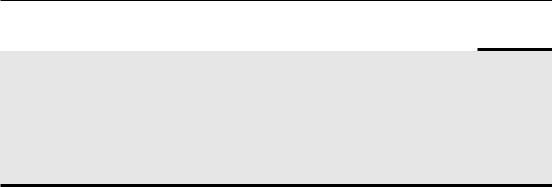
Chapter 24: Using Custom Number Formats
Using the TEXT Function to Format Numbers
The TEXT function accepts a number format string as its second argument. For example, the following formula displays the contents of cell A1 using a custom number format that displays a fraction:
=TEXT(A1,”# ??/50”)
However, not all formatting codes work when used in this manner. For example, colors and repeating characters are ignored. The following formula does not display the contents of cell A1 in red:
=TEXT(A1,”[Red]General”)
Here’s another example that displays text before the number:
“Average: “0.00
If you use the preceding number format, you’ll find that the negative sign appears before the text for negative values. To display number signs properly, use this variation:
“Average: “0.00;”Average: “-0.00
The following format string displays a value with the words Dollars and Cents. For example, the number 123.45 displays as 123 Dollars and .45 Cents.
0 “Dollars and” .00 “Cents”
Suppressing certain types of entries
You can use number formatting to hide certain types of entries. For example, the following format string displays text but not values:
;;
This format string displays values but not text or zeros:
0.0;-0.0;;
This format string displays everything except zeros:
0.0;-0.0;;@
You can use the following format string to completely hide the contents of a cell:
;;;
Note that when the cell is activated, however, the cell’s contents are visible on the Formula bar.
567

Part IV: Using Advanced Excel Features
Filling a cell with a repeating character
The asterisk (*) symbol specifies a repeating character in a number format string. The repeating character completely fills the cell and adjusts if the column width changes. The following format string, for example, displays the contents of a cell padded on the right with dashes:
General*-;-General*-;General*-;General*-
568
